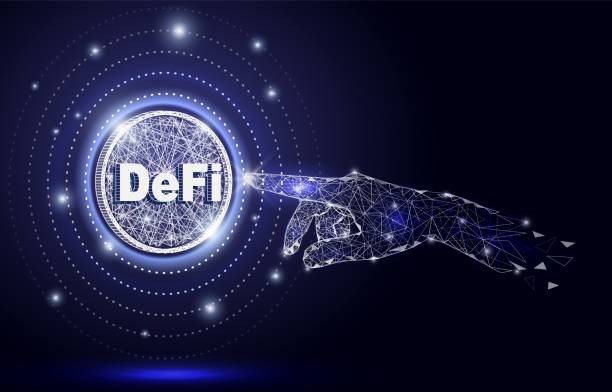What is DeFi? An Introduction to Decentralized Finance

1. What is DeFi?
Decentralized Finance (DeFi) refers to a financial system built on blockchain technology that operates without traditional banks or intermediaries. Instead of relying on institutions, DeFi uses smart contracts — self-executing code on platforms like Ethereum — to automate lending, borrowing, trading, and more.
MetaExchange views DeFi as a cornerstone of the crypto economy, offering people around the world access to financial services with transparency and control.
2. Why is DeFi So Disruptive?
DeFi eliminates gatekeepers like banks and brokers, giving users full control over their assets. Anyone with a crypto wallet and internet connection can:
Earn interest on savings
Borrow assets without credit checks
Trade tokens 24/7
Participate in governance decisions
This opens financial access to millions of unbanked users globally while enabling new investment opportunities.
3. How Does DeFi Work?
DeFi applications (or dApps) run on smart contract platforms like Ethereum, Binance Smart Chain, or Polygon. These apps operate without human intervention and are accessible through wallets like MetaMask or Trust Wallet.
Examples:
Lending/borrowing: Aave, Compound
Decentralized exchanges (DEXs): Uniswap, PancakeSwap
Stablecoins: DAI, USDC
Yield aggregators: Yearn Finance
Derivatives: Synthetix
At MetaExchange, we guide users through understanding and safely using these platforms.
4. Key Benefits of DeFi
Open access: No sign-ups or approvals — just connect your wallet
Full control: You hold your private keys and funds
Transparency: All transactions are on-chain and verifiable
Innovation: Rapid experimentation with new financial tools
Programmability: Smart contracts allow for automated services (e.g. flash loans, staking)
5. DeFi Risks to Watch For
While DeFi offers exciting potential, it’s not without risks:
Smart contract bugs: Code flaws can lead to hacks or loss of funds
Impermanent loss: Risks for liquidity providers in volatile markets
Rug pulls: Scams where developers abandon projects and drain funds
High gas fees: Especially on networks like Ethereum during congestion
MetaExchange Safety Tip: Always research projects thoroughly and never invest more than you can afford to lose. Use trusted protocols and consider audits and community reputation before using a DeFi app.
6. Earning with DeFi
DeFi isn’t just about using crypto — it’s also a way to earn:
Staking: Locking tokens to support a network and earn rewards
Yield farming: Providing liquidity in exchange for token incentives
Liquidity mining: Earning rewards for contributing to DeFi pools
Many users generate passive income by strategically engaging with these systems.
7. The Future of Finance is Decentralized
DeFi is growing rapidly, with billions of dollars in value locked across protocols. As more people seek alternatives to traditional banks, DeFi continues to offer:
Faster global access to capital
Transparent and programmable assets
Opportunities for innovation in insurance, identity, and asset management
Governments and institutions are also starting to recognize DeFi’s potential — some are even exploring central bank digital currencies (CBDCs) using similar tech foundations.
8. Final Thoughts from MetaExchange
DeFi is redefining what’s possible in finance. From permissionless lending to decentralized exchanges, this movement is creating a more open and inclusive economy.
At MetaExchange, we’re building more than just a hub — we’re creating a launchpad for users, businesses, and innovators to explore and thrive in the world of decentralized finance. Stay connected for upcoming tutorials, guides, and DeFi walkthroughs designed for all experience levels.